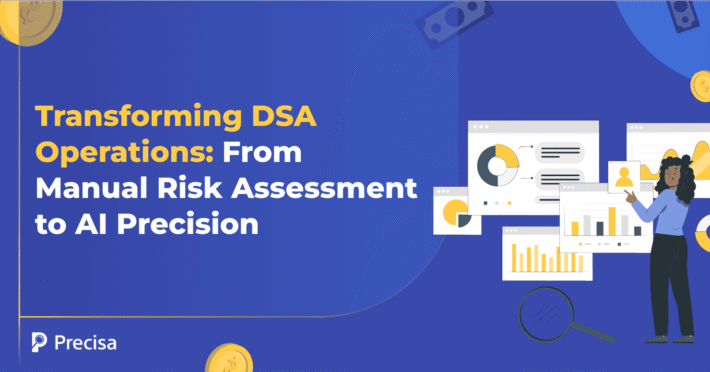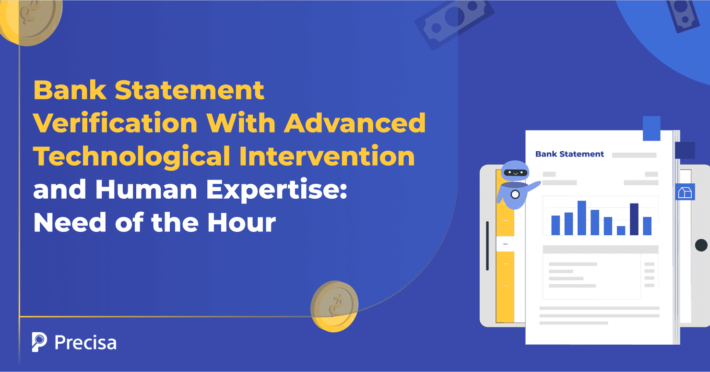RBI ‘s New LCR Norms: What Are The Impacts on Bank Lending?

Banks and financial institutions (FIs) play an integral part in keeping the wheels of the economy running smoothly. The Reserve Bank of India (RBI) serves as the central nerve point, as it maintains economic and financial stability by continuously monitoring financial institutions.
Occasionally, you may encounter announcements from the RBI regarding changes made in monetary policy to strike the right balance between efficiency and regulation. One such change proposed by the RBI is the Liquidity Coverage Ratio (LCR).
But what is the LCR? How does it impact lenders and borrowers? Let us elaborate on LCR and explore its impact on banking operations.
An Outline of LCR and Its Key Features
The RBI employs various tools to ensure monetary stability and operate the country’s currency and credit system to its advantage. One of these tools is the LCR.
Basically, it helps reduce the risk of withdrawals and ensures that banks and financial institutions have a substantial financial cushion in a crisis.
However, it also limits the lending capacity of financial institutions (FIs).
The RBI released a draft proposal in July 2024, which outlined the new liquidity standards under the Basel III framework to address risks associated with significant online withdrawals.
In response to concerns regarding stricter regulations, the RBI has asked commercial banks to evaluate how the new LCR norms will affect their operations.
To sum it up, it is a standard that ensures that banks have sufficient liquidity to withstand short-term and long-term stress.
Key Features of LCR
- Liquidity Buffer Requirements
Banks maintain a buffer of readily liquefiable assets to cover potential withdrawal demands over 30 days.
- High-Quality Liquid Assets
They hold assets, such as government bonds, to meet anticipated withdrawals.
- Collateral Deposit Status
Deposits pledged as collateral for a bank facility or loan are not included in LCR computation.
- Risk Weighting of Digital Deposits
According to the suggested regulations, banks must apply additional risk weightings to deposits made through the Internet and mobile banking (IMB) platforms to accommodate faster withdrawal patterns.
RBI’s Proposed Changes to LCR
The new draft aims to address the changes in the lending structure brought about by the rise in digital banking. This has led to an increase in the frequency and speed of withdrawals, which has decreased readily available savings deposits.
The proposed reforms will improve the liquidity resilience of banks and would apply to all Commercial Banks (excluding Payments Banks, Regional Rural Banks and Local Area Banks).
So, here are the proposed changes:
1. Additional Run-off Factor
Banks will now apply an additional 5% run-off factor to retail deposits, enabled with IMB. The Run-off factor refers to the percentage of deposits a depositor withdraws in case of a similar disruption.
2. Revised Run-off Factor
For stable retail deposits enabled with IMB, the run-off factor will increase to 10%, up from the current 5%. In contrast, less stable deposits enabled with IMB will have a run-off factor of 15% compared to the current 10%.
3. Regulation for Unsecured Wholesale Funding
Unsecured wholesale funding from non-financial small business customers will be treated like retail deposits.
4. HQLA Valuation
Level 1 High-Quality Liquid Assets (HQLA), in the form of Government securities, will be valued at an amount not greater than their current market value, adjusted for applicable haircuts in line with the margin requirements under the Liquidity Adjustment Facility (LAF) and Marginal Standing Facility (MSF).
Impact of RBI’s Proposed LCR Changes on Bank Lending and Liquidity

The proposed LCR norms are part of broader regulatory reforms introduced by the Basel Committee on Banking Supervision following the global financial crisis.
Lending regulatory bodies are becoming more stringent due to the growth in fraudulent activities and changing consumer behaviour. AI-enabled tools help banks comply with regulatory authority guidelines across all steps of the lending workflow.
Here’s how the changes will influence lending:
1. Reduced Lending Capacity
To meet the enhanced LCR requirements, banks will need to allocate ₹4-6 trillion into high-quality liquid assets (HQLAs) like government securities.
Since the RBI has consistently excluded the Cash Reserve Ratio (CRR) from qualifying as HQLAs, banks will have limited funds available for lending to businesses and individuals.
This diversion of funds into government bonds will reduce the liquidity that banks typically use for loans, potentially slowing down credit growth in the economy.
2. Lower Interest Rates on Deposits
The new norms mandate a 5% increase in deposit liquidity coverage and require a larger allocation of assets to HQLAs.
With a focus on maintaining liquidity, banks may struggle to offer attractive interest rates on deposits. This reduction in returns could push customers toward alternative investment options with higher yields, further impacting banks’ deposit inflows and, consequently, their lending capacity.
3. Changes in Treatment of Deposits
Under the proposed draft, term deposits will be treated similarly to retail deposits, requiring a liquidity cover of 10% or 15%, depending on their category.
While banks traditionally favoured term deposits for their longer tenure and lower liquidity requirements, this change will force banks to hold more cash reserves.
As a result, banks might limit loan issuance to businesses and consumers, tightening credit availability in the market.
4. Market-Based Valuation of Liquidity Bonds
The RBI’s new guidelines propose that government bonds used for maintaining liquidity be valued at their current market price instead of their printed price. This shift ensures that banks maintain accurate levels of liquid assets but could also introduce volatility into their balance sheets.
The need for additional purchases of government securities could affect banks’ profit margins and increase the costs of deposits.
5. Increased Provisioning and Higher Credit Costs
If the proposed guidelines are implemented in their current form, banks may face higher provisioning requirements. This change could drive up credit costs for borrowers by at least 400-500 basis points (bps).
For lenders, increased provisioning means setting aside more capital as a buffer against potential losses, which might reduce the funds available for lending and tighten credit conditions.
6. Enhanced Stress Resilience Through Liquidity Management
While the proposed LCR norms may limit immediate lending capacity, they are designed to enhance the resilience of banks during financial stress.
By reducing the risk of bank runs and ensuring liquidity during economic downturns, these regulations aim to create a more stable and robust banking environment.
Banks will need to adapt their liquidity management strategies, balancing regulatory compliance with the need to maintain profitability and support economic growth.
To Sum It Up
As per banking experts, the proposed changes in the LCR by the RBI will improve and strengthen the bank balance sheets in the long run.
Here are a few more observations:
- It is the right time to implement these guidelines as banks are well above the LCR threshold and have robust profits without needing outside capital to strengthen the balance sheet.
- Short-term impacts may be felt on lending but not immediately, as the RBI has given enough time to adjust to new provisioning requirements.
- Banks have prepared for the impact of these guidelines by stepping up their purchases of high-quality liquid assets. Therefore, banks are in a strong position to deal with the proposed changes.
Banks and other FIs can benefit from AI-powered solutions offered by Precisa, which can help lenders reduce non-performing assets, drive revenues, and become profitable over a shorter timeline.
Lenders can benefit in the following ways:
- Use comprehensive and seamless financial data analysis to speed up the lending process through automation.
- Tools like Bank Statement Analysis help speed up loan approvals and reduce defaults.
- Their solutions also help flag irregular transactions and recognise patterns associated with money laundering.
Sign up for a free demo today!




